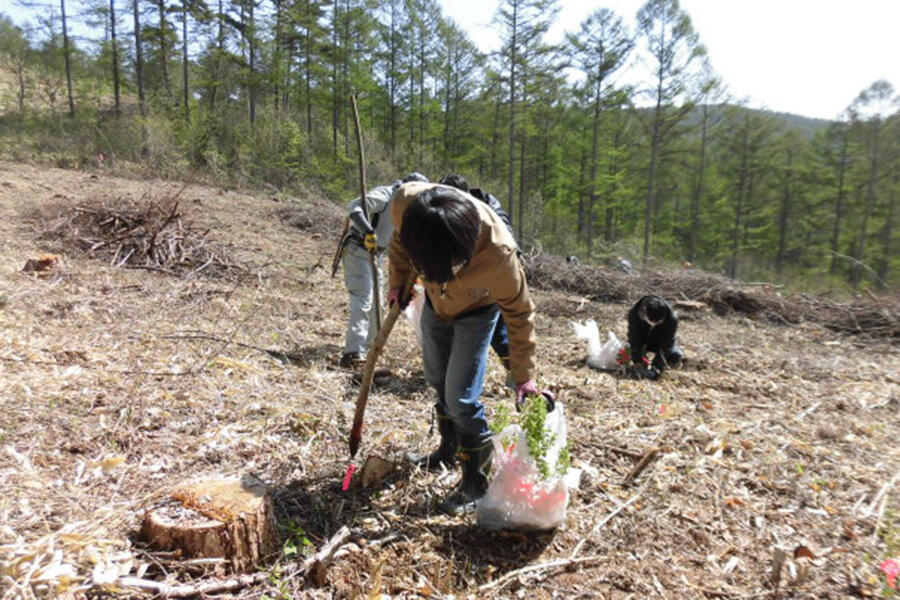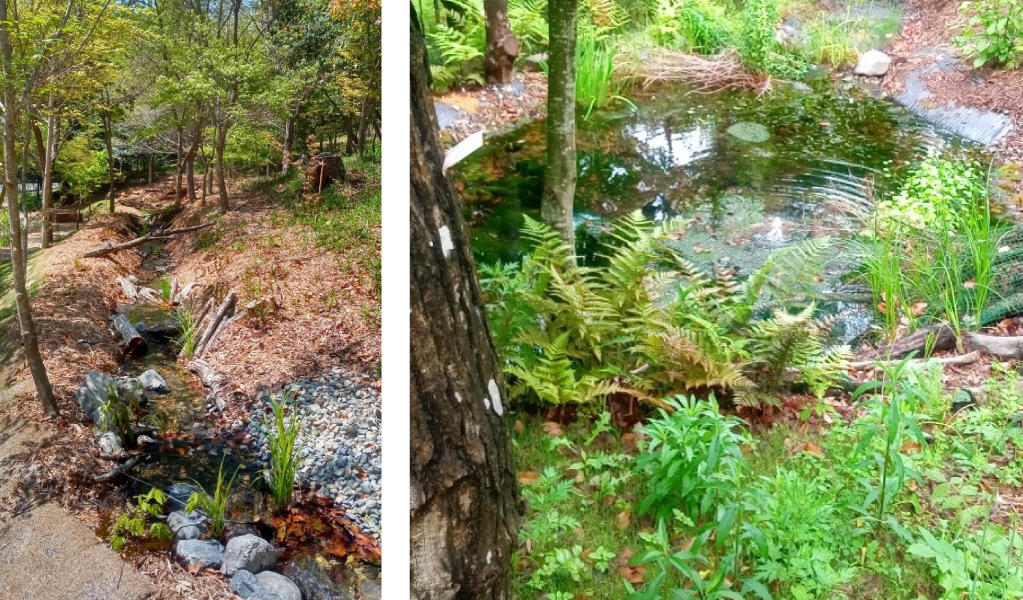Survival depends on the many gifts of nature. Nevertheless, a forest area equivalent to one-fifth of Japan's land mass is lost from the earth every year - and extinction rates have accelerated 1,000 times because of human activity over the past several hundred years, making biodiversity an extremely serious issue.
Since business activities depend on ecosystems but also having a significant impact on them, protecting biodiversity is an important aspect of environmental management for sustainable growth. The Kyocera Group management philosophy includes living together to coexist harmoniously with our society, our global community and nature. In line with this, the Group strives to conduct its corporate activities in harmony with nature based on coexistence with society, the global community and nature. The Group also aims for a more sustainable society by minimizing the environmental impact of our business and protecting the natural environment based on the Kyocera Group Environmental Safety Policy.
- Reduce natural environmental destruction and ecological impacts, such as avoiding areas of significant biodiversity
- Conduct environmental impact assessments and work to mitigate impacts, including minimization, restoration, and offsets
- Actively promote the greening of business sites
- Participate in and support social contribution activities in cooperation with external partners
Since 2010, we have participated in the Nippon Keidanren's "Declaration of Biodiversity" and have endorsed the Keidanren Declaration of Biodiversity and Action Guidelines (revised version) proposed by the Keidanren Declaration of Biodiversity Initiative since 2020.
Activities Related to Biodiversity Conservation
To improve environmental awareness among employees while addressing issues of climate and biodiversity, the Kyocera Group engages in domestic reforestation efforts, biotope development, protection of endangered species, and efforts to preserve and cultivate traditional vegetables in local communities.
Exceeding the goal of engaging in 47 biodiversity protection activities in FY2025, Kyocera actually conducted 52 activities. In FY2026, the company plans to increase this to 51 biodiversity protection activities.
| Targets for FY2025 |
|
|---|---|
| Achievements in FY2025 |
|
| Targets for FY2026 |
|
|---|
Promoting Kyocera Forestation Activities
The Kyocera Group conducts activities to help factory compounds and local forests regain rich greenery to contribute to various environmental issues, such as preventing climate change and preserving biodiversity, contributing to local community development, and enhancing employees' environmental awareness. Activities mainly include thinning, weeding underbrush, and tree planting in collaboration with external partners such as forestry cooperatives and local residents.




Activities in FY2025
| Place of activity | Start of activity | Details of Activity | |
|---|---|---|---|
| Okaya City, Nagano Prefecture | Minatozaisan area (about 80,000 m2) | October 2011 | Supported Nagano Prefecture's "Forest Foster Parent Promotion" project. Planting of larch trees: A total of 3,450 trees. |
| Partners: Okaya City, Minato Property District Management Association | |||
| Higashiomi City, Shiga Prefecture | Forest owned by the Shiga Higashiomi Plant (about 20,000 m2) | June 2008 | Thinning and underbrush clearing. Vegetation restoration through natural renewal. |
| Ayabe City, Kyoto Prefecture | Forest owned by the Kyoto Ayabe Plant (about 24,000 m2) | April 2020 | Tamba Chestnut Planting: Total of 37 trees. Thinning, underbrush cleaning, and promenade development. |
| Partners: Ayabe City, Kyoto Model Forest Association | |||
| Kyotanabe City, Kyoto Prefecture | Mt. Kannabi (about 880,000 m2) | November 2012 | Thinning and underbrush clearing. Vegetation restoration through natural renewal. |
| Partners: Kyoto Prefecture, Kyotanabe City, Kyoto Model Forest Association, Takigi Kannabiyama Preservation Society. |
|||
Development of Biotope (nurturing of fireflies)
Develop biotopes at the Kagoshima Kokubu Plant, Shiga Yasu Plant, and Shiga Higashiomi Plant to ensure habitats for flora and fauna and enhance environmental awareness among employees while providing a place for rest.
Kagoshima Kokubu Plant


Shiga Higashiomi Plant


Shiga Yasu Plant


Biodiversity Survey at a Plant
The Shiga Yasu plant conducted a joint biodiversity survey with an external organization to understand the current status of the biotope and other green spaces at the plant and to develop guidelines for biodiversity protection activities. The survey on plants, insects, birds, and aquatic organisms showed that native species, endangered plants and animals, and trees native to the region inhabited the biotope and the green spaces at the plant, and these have become valuable habitats for the organisms in the surrounding area. Within the biotope, we found signs of a colony of Celtisaspis japonica larvae, listed as a near threatened (NT) species on the Red List compiled by the Ministry of the Environment, Japan (MOEJ Red List), and listed as a principal species in the Red Data Book published by Shiga Prefecture. The company will continue to conduct effective activities that contribute to the protection of biodiversity in the region based on the results of the survey.
Protection of endangered species
Kyocera Document Solutions Inc.'s Mie Tamaki Plant has signed an agreement with Sugashi Arita Sadaoki Environmental Conservation Association to conduct biotope restoration activities in Satochi-Satoyama area. As a result of ecoscaping and land management efforts, including thinning, weeding and maintaining waterways around former rice paddies, a recovery has been observed among local at-risk fauna and flora. In parallel with this, we support observation events for children to learn about nature and biodiversity.

